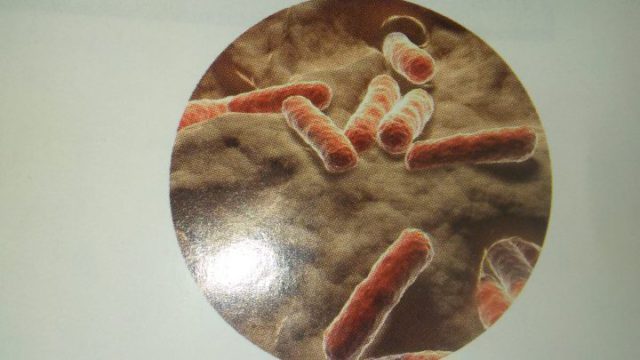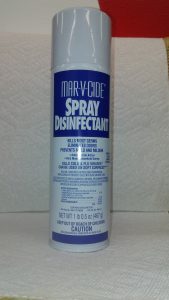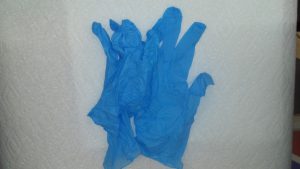
Keep the public safe!
As a barber stylist, it is my professional and legal obligation to prevent the spread of harmful bacteria while servicing the public. I would like to discuss the importance of keeping your tools clean to ensure you are practicing safe procedures. In many cases dirty tools can cause infectious disease and disorders to spread from person to person. Ringworm, dandruff are among many infectious diseases that can pass through the public. Practicing disinfection regularly can cut down on this possibility by 99.99%. Using proper decontaminating procedures will ensure this, and here they are.
Levels of sanitation
There are three levels of santitation to reference when working in the field of beauty. Here they are from least effective to the most!
- Sanitization: using soap and water to reduce the number of germs, and bacteria from porous surfaces that causes disease. Does not stop germs from resurfacing.
- Disinfection: using an E.P.A registered cleaner to remove the presence of germs, bacteria, viruses, and fungi from all non-porous surfaces.
- Sterilization: the most effective way to remove and reduce ALL disease causing bacteria, fungus, and viruses.
Those being the three levels it is easier to break it down by remembering while your hands can be sanitized, they can only be sterilized by using sterilized gloves. Non-porous areas such as tools and stations can be disinfected and dress for protection (i,e paper towel)
In the beauty field because we do not penetrate the skin none of the tools we use need to be sterilized.
Disinfection is required after each guest in the beauty industry to ensure the control of infection and its mobility.
Making sure your hands are sanitized is a guaranteed way to ensure you are free of germs and microbes.
Infection control products
The goal is to prevent the spread of disease to the public. To decontaminate items must first be cleaned and then disinfected. The federal government have put laws into place for proper precaution to prevent the spread of bacteria. If you fail to follow proper disinfection procedure, legal action can be taken where you can be held responsible for any outcome in result.
it is important to keep all products labeled and a record of material safety data sheets on the premise to guarantee proper use. Before using any agent the safety and storage instructions must be read to make sure they are correctly used.
For any disinfectant to be effective it must be E.P.A registered as a  broad spectrum cleaner making it hospital grade able to kill all viruses, fungi, and bacteria air or bloodbourne. This number can be found somewhere on the bottle usually on the back under the active ingredients. If your cleaner isn’t registered then you may be spreading bacteria and not knowing.
broad spectrum cleaner making it hospital grade able to kill all viruses, fungi, and bacteria air or bloodbourne. This number can be found somewhere on the bottle usually on the back under the active ingredients. If your cleaner isn’t registered then you may be spreading bacteria and not knowing.
Bleach is the #1 used cleaner in the barbershop mixed at a 10:1 ratio to be effective. Ten parts water to every one part bleach. Two ounces of bleach requires 20 ounces of water to become an effective disinfectant.
I use the mar-v-cide spray to disinfect as it is easy to use and has multiple uses as an odor eliminator, and disinfectant for my tools and station.
purell is your universal hand sanitizer, but rubbing alcohol can be used in substitution at 70% ethyl alcohol and 91% isopropyl alcohol.
Infection control procedures
The procedure of infection control is just as important if not more than the products. If you don’t administer the products as directed they can be ineffective leaving your guest vulnerable to contract disease. Leaving YOU the barber liable or YOU the guest infected.

SAFETY FIRST!
disposable gloves and goggles should be worn to protect your skin and eyes as the ingredients of your disinfectant can be hazardous. Always resort to your M.S.D.S to be on the safe side.
All tools and surfaces must be cleaned and decontaminated before they can be disinfected. Here are the steps in disinfecting clippers for infection control practices.
Using a toothbrush with warm mild soapy water should be used to remove all dirt, debris, and skin from the surface/ teeth of your tool. Use a towel/paper towel to dry your tool of excess moisture.
Holding your spray 6-8 inches from the surface spray your clipper head until covered. To sanitize; the clipper can be wiped off right away. In order to kill bacteria, virus, and fungus the spray must sit for ten minutes or suggested contact time of product before being wiped away. This method is used whenever your tool comes in contact with any type of body fluid. MUST be done WITHOUT HESITATION whenever a bloodspill happens.
implements such as combs, brushes, and metals can be decontaminated first then sat in a 10:1 bleach solution to disinfect your implements. Completely submerged in the solution and left for at least 10 minutes.
Infection control conclusion
Bacteria and viruses cannot be seen with the naked eye so using precaution before and after each guest is paramount. It is easy to spread disease and disorder if infection control is not a practice.
Have you ever seen skin irritation from razors? Or bumps caused by an uncomfortable shave? This can be caused by bacteria being transferred by the dead skin and dirt left behind on clippers. Each passing of the clipper on ones face or head can leave behind bacteria easily contaminating the skin leaving it open for infection.
So the next time you go get a haircut take a good look at your barber and how he cleans his tools. Does he constantly brush away dirt and debris? Does he clean his hands before beginning your service? Ask can you look in his station and see what type of response you get. Does he put his clippers away without spraying or brushing them? If so, don’t be afraid to ask that the tools be cleaned before proceeding with your service. It may be a matter of infection, or infection control.
If you are a barber start practicing decontamination and disinfection NOW. Keeping your tools clean is a must if you want to enjoy a long healthy career ensuring safe services for each and every guest you seat! Being negligent for a disease or infection you could have prevented can be avoided with proper infection control practices. Legally and professionally practice safely and properly!
Thank you for reading,
Shannon Kamal
Hey Shannon! You’re site is wonderful! I love the design and the info because there are a lot of stylist out there who need to read you site. It may be an extra step or two, but is it worth potentially losing your business if you don’t take them? You make really great points!
Okay are we supposed to reply to how much does a good haircut cost? Well, I have short hair it doesn’t touch my shoulders, it’s about chin length, my hair is thick but fine. I like my hair in a bob so short in the back it is shaved up some and stacked and coming at a drastic angle to the front. Then I want it bleached, but not all over. Have you ever looked closely at Marilyn Monroe’s hair? She’s not platinum all over her hair is done in tiny stips one left dark and the next platinum. So, then my stylist spends time putting literally 200 pieces of foil in my hair. After those are done processing, she puts a toner on my hair. Then she styles my hair. Luckily I know the girl that does my hair and she always just asks for $120! I’ve been there over three hours. Yes, she can work people in around me but 1 hour was spent foiling my hair. So she gets a $100 tip. I’m not rich but I like my hair to look good and it’s not easy to cut, so if someone can do it right, I’ll pay. I paid almost $400 when I had a better job and lived somewhere else. So, I think it depends on what you are getting done, how hard is your hair to handle, and how long it takes.
Hey Keli,
Thank you for your kind words and comments of encouragement! Spread the word and be kind to share as I plan to build a playground for stylist and guest alike.
Pricing for services is tricky when you factor in cost of tools and time. Putting a value on your work is important to be successful in this arena. I believe you were given a very fair price all things considered with your generous gratuity both sides should be satisfied.
I do hope this site reaches a lot of stylist who are in a rut with their career. It is my mission to serve them and bring fun and life to an awesome career!
Thank you for engaging,
Shannon kamal
hi shannon
i’ve never thought about hygiene when i get a hair cut or have a close shave.some great info. i will definitely check next time i’m at the barbers .brycey
I’m sure your barber isn’t giving you anything to worry about! Just be cautious with going to a new barber. This one may not be as careful and I have seen a lot of nasty barbers!
Thank you for stopping by,
Shannon kamal
Oh Wow! I had never realized the potential of harmful germs and bacteria at my barbershop. I will be very watchful as off hand I don’t remember him doing much to clean his tools. Thank you for such an informative article!